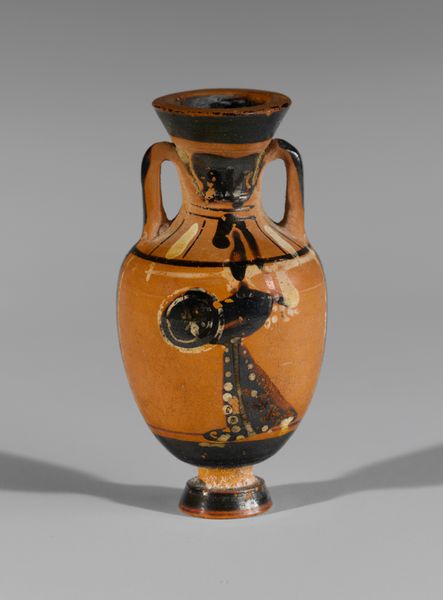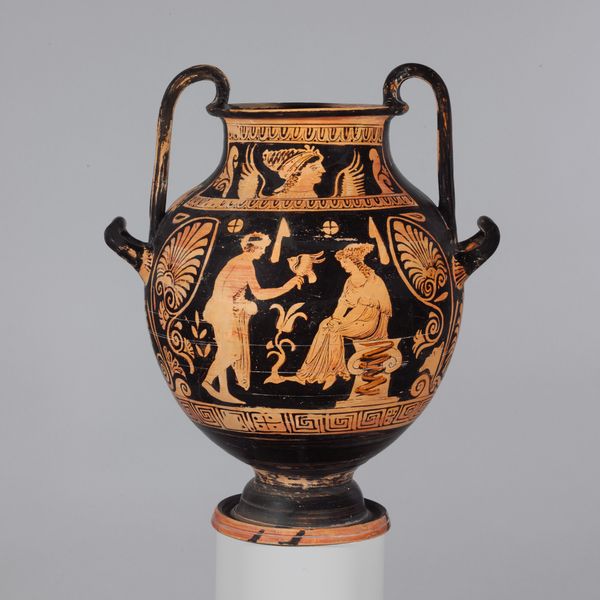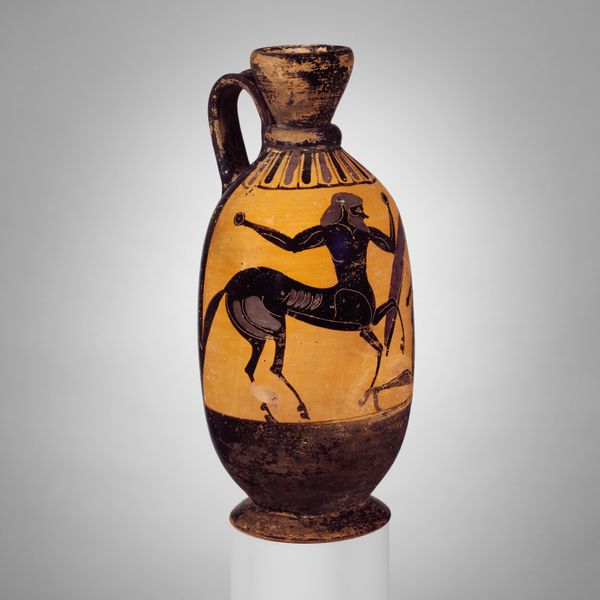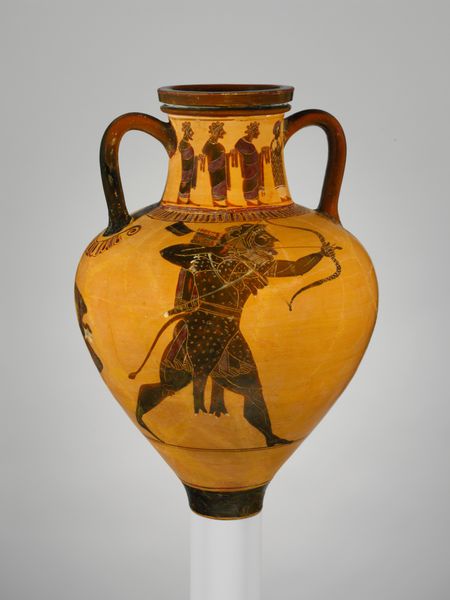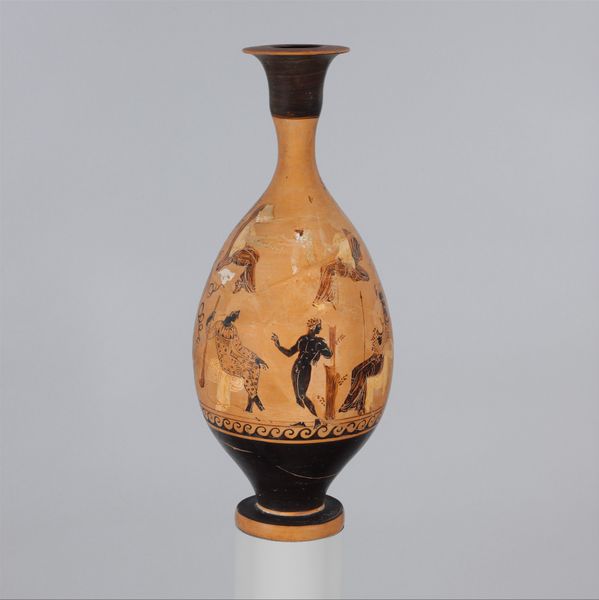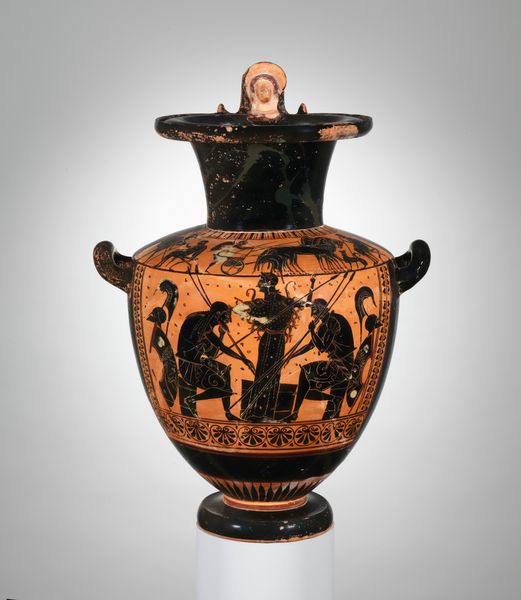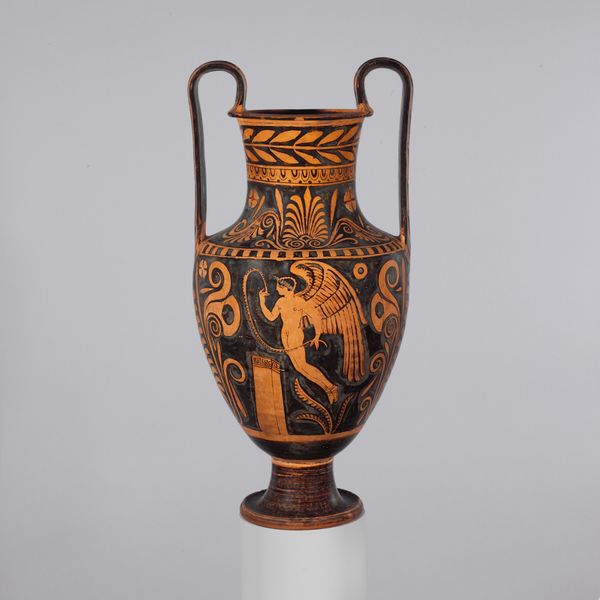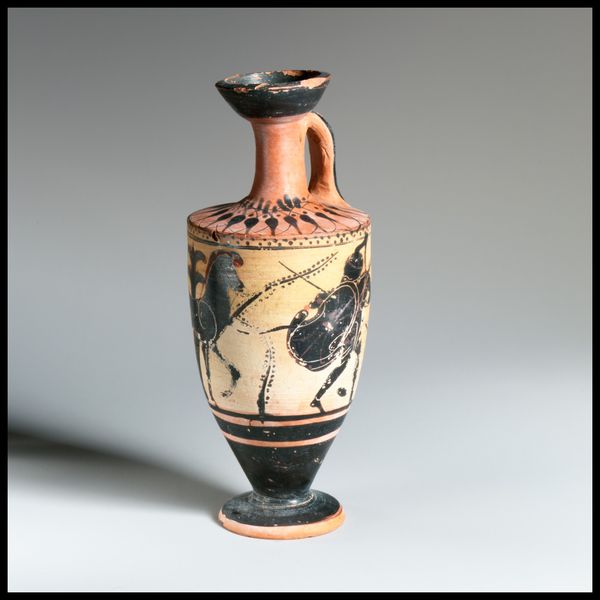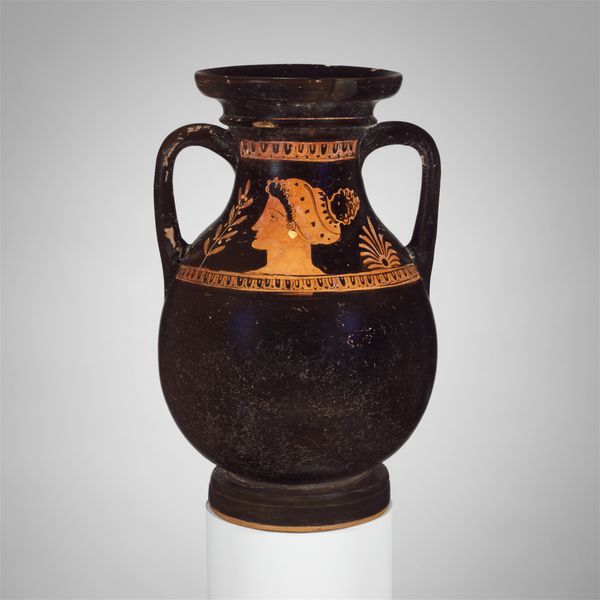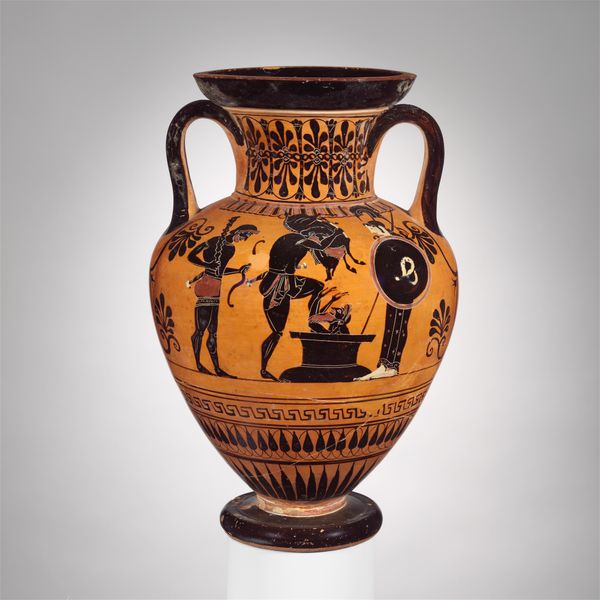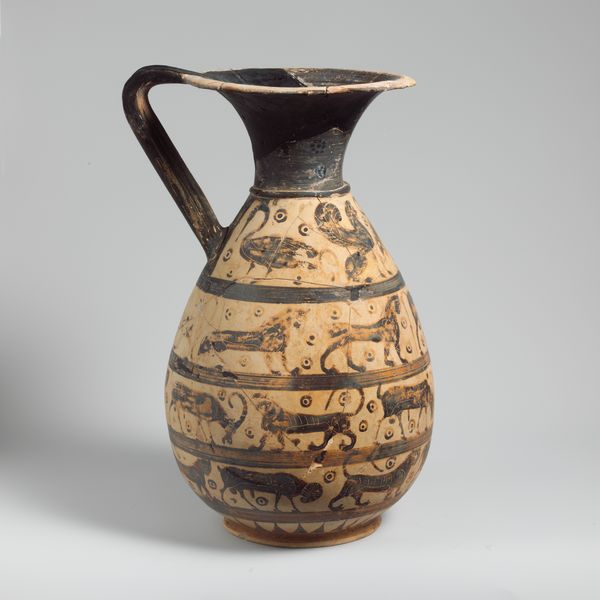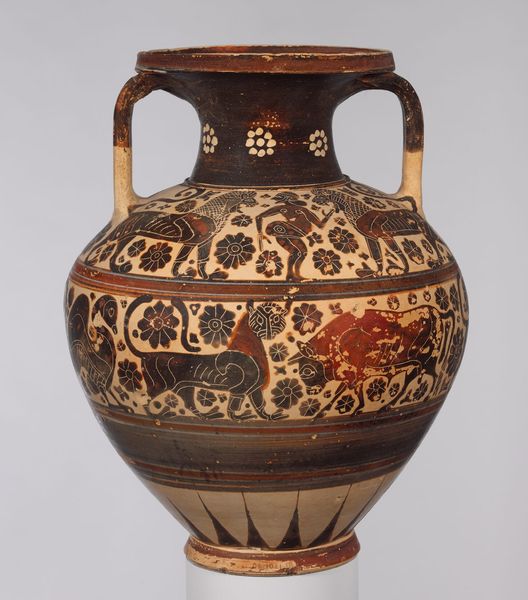
print, ceramic, terracotta
#
portrait
# print
#
greek-and-roman-art
#
ceramic
#
figuration
#
roman-art
#
ancient-mediterranean
#
ceramic
#
terracotta
Dimensions: H.: 15 7/16 in. (39.2 cm)
Copyright: Public Domain
Curator: This striking vessel is a terracotta neck-amphora with lid, dating back to 525 BC. It currently resides in the Metropolitan Museum of Art. Editor: The patina and stark black figures on that buff clay—it looks incredibly aged. Makes you think of millennia. Curator: Absolutely. Let’s delve into the iconography. The amphora showcases stylized figuration. Figures of importance were portrayed, reflecting status. But how does the physical act of making—the potting, firing—intersect with those power dynamics? Editor: The materiality is key, here: This was created by the hands of craftspeople; it likely stored or served something. Its utility is inextricable from its value, beyond pure aesthetics, you see the labour and access to resources speaking as much about trade networks, craft specialization and likely inequalities within Greek society at the time. Curator: The scenes can also be analyzed through contemporary theoretical frameworks, particularly feminist interpretations of Greek art. The vase provides glimpses into their society that highlight deeply-rooted structures of dominance and maybe even female resistance against imposed boundaries. Editor: And think of the kiln! Firing these large vessels was no small feat. Imperfect outcomes might indicate the maker, which offers further contextual information around where labour resided within society during 525 BC, reflecting perhaps status differences within trades, too. These details matter because the making *is* part of the message, right? Curator: It adds layers of meaning, certainly. Understanding the social function – holding liquids or goods– along with depictions – animals or deities – places art history into wider contemporary debates on culture, identity, gender… The neck-amphora then opens itself to many ways to consider the past through various points of intersection. Editor: Indeed, and looking at this beautiful object, both the artistic choices and manufacturing processes serve as reminders that art is so intrinsically tied to the socio-economic conditions of its creation. A testament to material history!
Comments
No comments
Be the first to comment and join the conversation on the ultimate creative platform.
